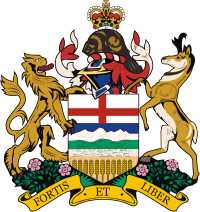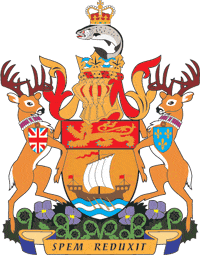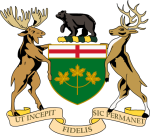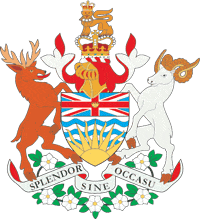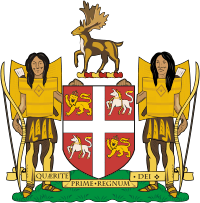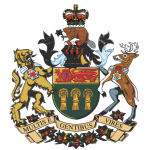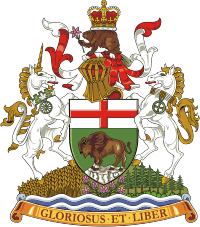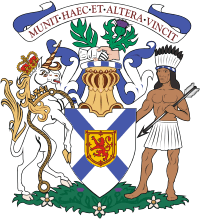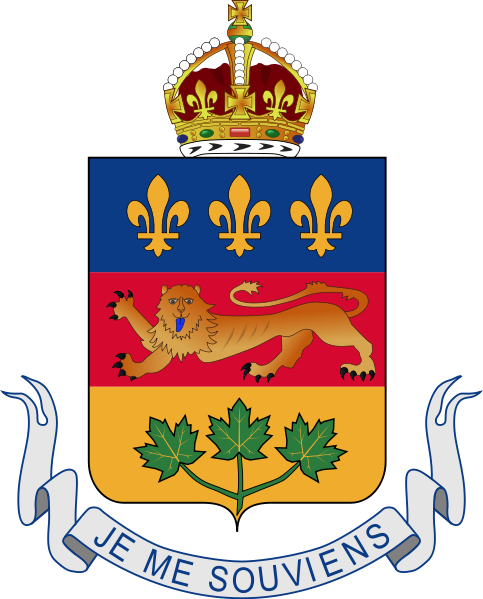Smoky Lake
Attention:
Contact information
Smoky Lake AB T0A 3C0
Telephone: 780-656-3550 – Administration
Telephone: 780-656-3691 – Non-emergency
Fax: 780-656-3567
Provided language(s):English only
Your nearest bilingual detachment is Fort Saskatchewan
Mailing address
P.O. Box 239Smoky Lake AB T0A 3C0
Hours of operation
- General services
- Monday to Friday
8 am to 4 pm
Services available
- Criminal records check
- General information
- Non emergency complaints
- Police certificate
- Report a crime
- Vulnerable sector check
Please be advised: Information is subject to change without notice.
Smoky Lake Local Real Estate Agent
The largest Canada Wide Network of RCMP Relocation Realtor’s give you a huge advantage when buying or selling your home due to relocation or posting. Quick access to Canada’s Top Realtor’s in every RCMP Detachment in Canada can give you an immediate head start whether buying or selling.
Our Real Estate agents have contacts for home stagers, mortgages, insurance, lawyers and home inspectors. We can recommend a selection of professionals from you to choose from. Selling your home is a complicated and stressful process that affects you and your families future. As soon as you even hear that you may be transferred contact your IRP-DND.COM approved Realtor to start working for you. Posting season brings a lot of properties onto the market and the sooner you get started the farther ahead of your competition you will be. Call your Realtor today to get your Market Appraisal started to find out the current value of your property.
Smoky Lake RCMP Real Estate Information
The town is recognized as the Pumpkin Capital of Alberta and the home of the annual Great White North Pumpkin Fair. This combined with the Smoky Lake Stampede and other events throughout the year makes the town a must visit. Residents and visitors enjoy a state of the art Golf Club, a Spray Park for the kids a Curling Rink and even the Complex Ice Arena. With many Restaurants, Hotels, Alberta Registries, Hardware Store, and even a fully equipped Hospital . The town offers most of the services of the city without the line ups and traffic.
View Smoky Lake Real Estate Listings
Smoky Lake Information
Smoky Lake is a town in central Alberta, Canada. It is located 116 km (72 mi) northeast of Edmonton at the junction of Highway 28 and Highway 855. It lies between the North Saskatchewan River, Smoky Creek, and White Earth Creek, in a mainly agricultural area. The provincial historic site of Victoria Settlement is nearby. Long Lake Provincial Park is located 60 km (37 mi) north of the town. The Woods Cree, a First Nations people, named “Smoking Lake” for the smoke from ceremonies performed on the shore; the name Smoky Lake may also be based in the mist that rose from the lake in great quantities at sundown. One of its churches, the St. Onuphrius Ukrainian-Catholic, built in 1907, has been moved to the Canadian Museum of History in Gatineau, Quebec. It is in Census Division No. 12 and is the municipal office for the Smoky Lake County.
The Annual Posting Season (APS) marks a significant time for RCMP personnel and their families, as they embark on new postings and transitions to different locations across the country. As your Local Real Estate Expert with a deep understanding of the unique challenges and demands of the APS, your Realtor is here to provide invaluable support and guidance throughout this crucial period.
During the APS, military members and their families face the task of finding suitable housing in their new posting location while navigating tight timelines and logistical complexities. As your local real estate professional, I specialize in assisting RCMP families during the posting season of. As your local expert I am well-versed in the specific needs and requirements of RMCP relocations, allowing me to streamline the process and alleviate the stress often associated with finding a new home.
Our comprehensive knowledge of the housing market across Canada and surrounding areas, allows us to help you explore various neighborhoods, identify suitable properties, and negotiate favorable terms. We understand the importance of proximity to your local Detachment, schools, amenities, and other factors that impact the daily lives of RCMP families. Whether you are looking to rent or buy a home, our local real estate expert will work closely with you to find the perfect fit for your unique needs and preferences.
Beyond assisting with the physical aspects of your relocation, we are also well-connected within the community. As your local BGRS realtor I can provide you with valuable resources, connect you to local support networks, and offer insights into the local area to help you settle in smoothly. My goal is to ensure that you and your family feel supported, informed, and confident as you embark on this new chapter in your relocation journey.
With my expertise and personalized approach, you can trust that your APS relocation will be handled with the utmost care and professionalism. Together, we will navigate the complexities of the RCMP APS, making the transition as seamless as possible, and ensuring that you find a place you can truly call home. Contact us today to get started and let’s make your APS relocation a positive and successful experience.
Burnaby is a city in the Lower Mainland region of British Columbia, Canada. Located in the centre of the Burrard Peninsula, it neighbours the City of Vancouver to the west, the District of North Vancouver across the confluence of the Burrard Inlet with its Indian Arm to the north, Port Moody and Coquitlam to the east, New Westminster and Surrey across the Fraser River to the southeast, and Richmond on the Lulu Island to the southwest.
Burnaby was incorporated in 1892 and achieved its city status in 1992. A member municipality of Metro Vancouver, it is British Columbia’s third-largest city by population (after Vancouver and Surrey), and is the seat of Metro Vancouver’s regional district government. 25% of Burnaby’s land is designated as parks and open spaces, one of the highest in North America.
The main campuses of Simon Fraser University and the British Columbia Institute of Technology are located in Burnaby. It is home to high-tech companies such as Ballard Power (fuel cell), Clio (legal software), D-Wave (quantum computing), General Fusion (fusion power), and EA Vancouver. Burnaby’s Metropolis at Metrotown is the largest mall in British Columbia, the third most visited in Canada and the fifth largest in the nation. Canada’s largest film and television production studio and more than 60% of BC’s sound stages are in Burnaby, contributing to the growth of Hollywood North.
The city is served by SkyTrain’s Expo Line and Millennium Line. Metrotown station in Metrotown is the busiest station on weekends and the second-busiest on weekdays in regional Vancouver’s urban transit system as of 2021.[8]
History
Pre-colonial (before 1850)
Early inhabitants were the hən̓q̓əmín̓əm̓ and Sḵwx̱wú7mesh speaking Coast Salish Nations. Local landmarks such as Burnaby Mountain, Deer Lake, and Brunette River feature prominently in Indigenous history passed down through oral traditions. The northern shorelines of Burnaby, along the second narrows of Burrard Inlet was the site of an ancient battle between the attacking Lekwiltok and the defending Musqueam according to Chief Charlie Qiyəplenəxw.
The Coast Salish people living in BC and Washington state numbered more than 100,000 people, a level of population density supported by agriculture in other geographies. Techniques to preserve and store surplus food sustained a hierarchical society. Burnaby’s marshlands along its rivers and lakes were cranberry harvesting areas for numerous villages, some numbering over 1,000 residents. Indigenous people travelled through Burnaby to reach the mouth of Brunette and Fraser River for the bountiful fishing seasons, eulachon in the spring and sockeye salmon in the late summer. Early European explorers and fur traders introduced diseases that decimated the Indigenous population. This false appearance of Burnaby as a vast open space, along with traditional Indigenous farming techniques which did not permanently alter the landscape, meant Indigenous land in Burnaby was mislabelled as terra nullius.
Incorporation (1850–1990)
The Fraser Canyon Gold Rush of 1858, the first of many gold rushes in British Columbia, brought over 30,000 fortune seekers, including many American miners. The fear of an impending annexation by the United States led to the creation of the Colony of British Columbia in 1858 and the establishment of New Westminster as its capital.
Settlers in Burnaby acquired land through a process called pre-emption which allowed people to claim a piece of land by clearing forests and building houses. Indigenous people were excluded from pre-emption. Royal Engineers dispossessed land from Indigenous people with the assistance of military force including the original routes of North Road, Kingsway, Canada Way, and Marine Drive. Logging permits given to settlers destroyed the forests of southern Burnaby which had provided vital sustenance for Indigenous people.
The City of Burnaby is named after Burnaby Lake, in turn named after Robert Burnaby, who was a Freemason, explorer, and legislator. He was previously private secretary to Colonel Richard Moody, the first land commissioner for the Colony of British of Columbia. In 1859, Burnaby surveyed a freshwater lake in the city’s geographic centre. Moody named it Burnaby Lake.
Burnaby was established in 1891 and incorporated a year later in 1892. In the same year, the interurban tram connecting Vancouver, Burnaby, and New Westminster began construction.
Recent
The expanding urban centres of Vancouver and New Westminster influenced the growth of Burnaby. It developed as an agricultural area supplying nearby markets. Later, it evolved into an important transportation corridor between Vancouver, the Fraser Valley and the Interior. The introduction of the Skytrain’s Expo Line cemented this trend into the 21st century.
As Vancouver expanded and became a metropolis, Burnaby was one of the first-tier suburbs of Vancouver, along with North Vancouver and Richmond. During the suburbanization of Burnaby, “Mid-Century Vernacular” homes were built by the hundreds to satisfy demand by new residents. The establishment of British Columbia Institute of Technology (BCIT) in 1960 and Simon Fraser University (SFU) in 1965 helped Burnaby gradually become more urban in character. In 1992, one hundred years after its incorporation, Burnaby officially became a city.
Since the 1970s, Burnaby has seen a decline in resource sectors and a subsequent rise of high value-added services and technology sectors. The presence of BCIT and SFU promoted research & development in the area. For example, manufacturing plants near Still Creek closed in the late 1970s, only to reopen few years later as film production studios. The continued expansion of media production in Burnaby contributed to Hollywood North.
Geography and land use
Burnaby occupies 98.6 square kilometres (38.1 sq mi) and is located at the geographic centre of the Metro Vancouver Regional District. The city has four areas of urban density known as “town centres”: Lougheed, Edmonds, Metrotown, and Brentwood. The city’s governmental and cultural precincts are located in Burnaby’s Deer Lake area. Situated between the city of Vancouver on the west and Port Moody, Coquitlam, and New Westminster on the east, Burnaby is bounded by Burrard Inlet and the Fraser River on the north and south, respectively. Burnaby, Vancouver and New Westminster collectively occupy the major portion of the Burrard Peninsula. The elevation of Burnaby ranges from sea level to a maximum of 370 metres (1,214 ft) atop Burnaby Mountain. Due to its elevation, the city of Burnaby typically has more snowfall during the winter months than nearby Vancouver or Richmond. Overall, the physical landscape of Burnaby is one of hills, ridges, valleys and an alluvial plain.
Burnaby is home to many industrial and commercial firms. British Columbia’s largest (and Canada’s second largest) commercial shopping mall, Metropolis at Metrotown, is located in Burnaby, as well as malls in Brentwood and Lougheed town centres. Still, Burnaby’s ratio of park land to residents is one of the highest in North America. It also maintains some agricultural land, particularly along the Fraser foreshore flats in the Big Bend neighbourhood along its southern perimeter.
Parks, rivers, and lakes[edit]
Major parklands and waterways in Burnaby include Central Park, Robert Burnaby Park, Kensington Park, Burnaby Mountain, Still Creek, the Brunette River, Burnaby Lake, Deer Lake, Squint Lake, and Barnet Marine Park.
Welcome to our RCMP Relocation Site
Welcome to Canada’s Largest Directory of RCMP Relocation Realtors. These Approved Realtors are your Local Experts who fully understand the rules and requirements of families involved in the RCMP Relocation Program. Understanding the Local Real Estate Market is of paramount importance to our clients, whether Buying or Selling.
To find your Local RCMP Relocation Expert just Choose Your Province from list below. You will then have a List of RCMP Detachments to choose from.
All our Realtors are Authorized RCMP Relocation Experts who are dedicated to putting their knowledge of RCMP requirements to ensure your next posting is as “Stress Free” as possible



